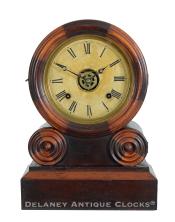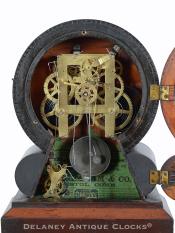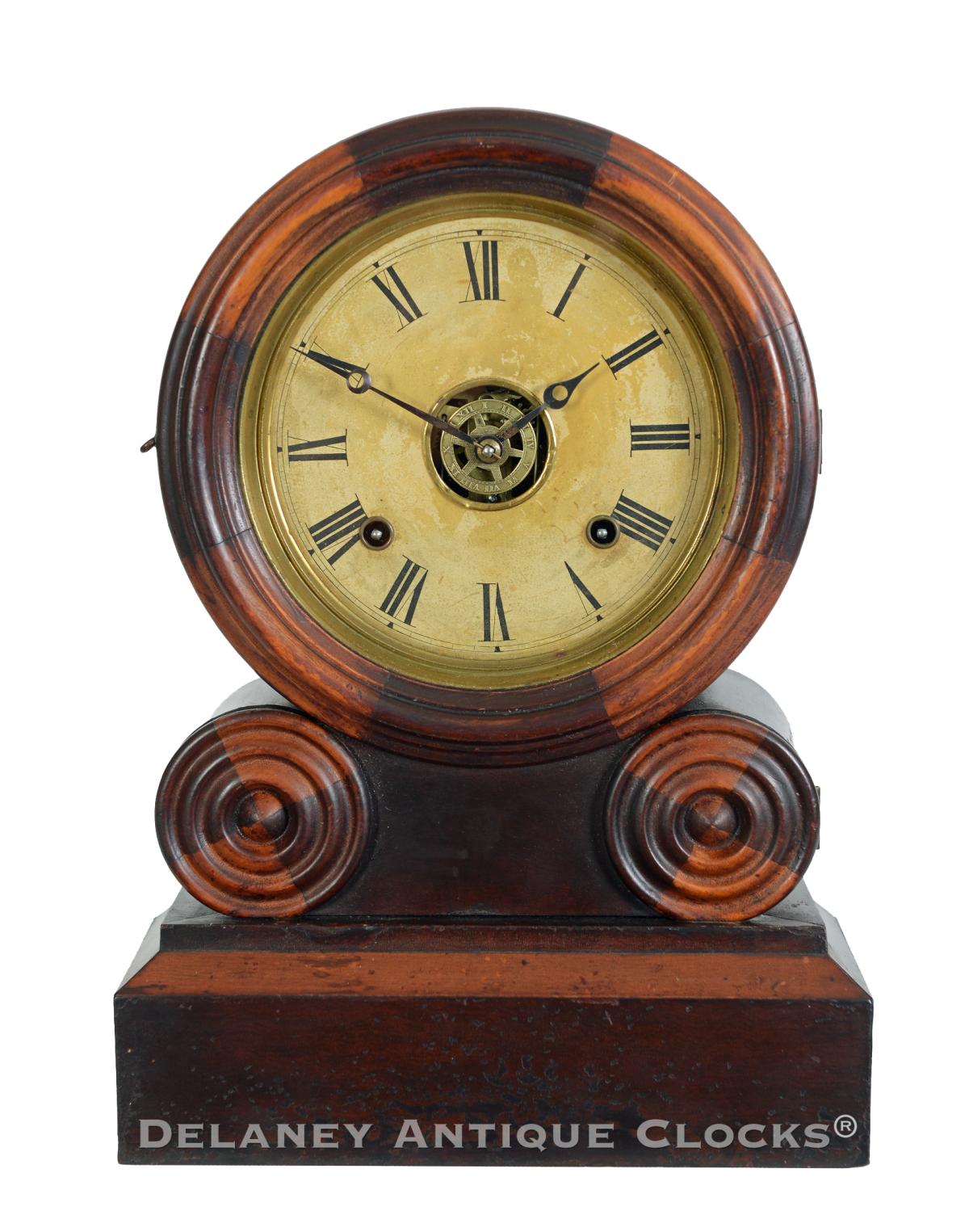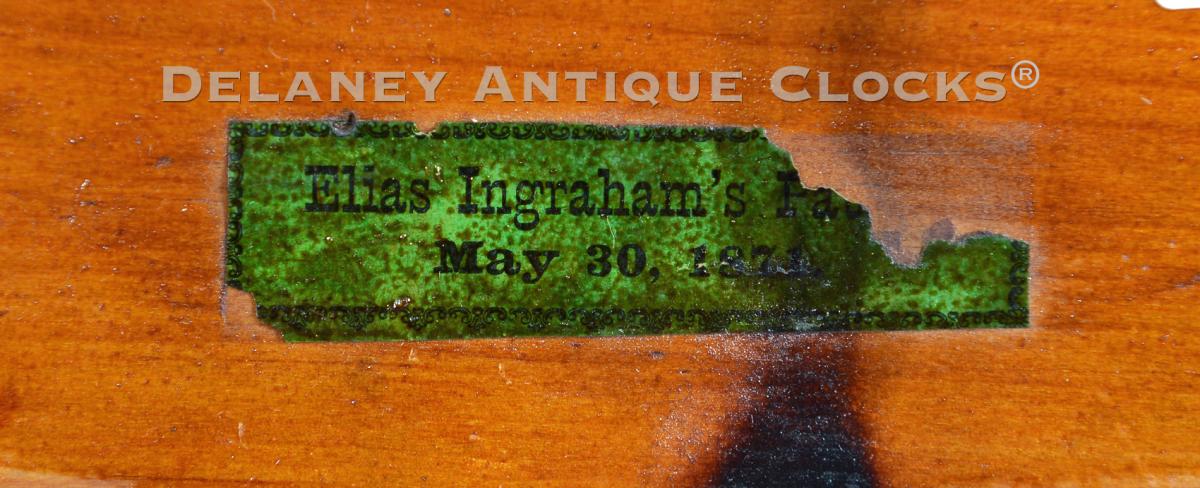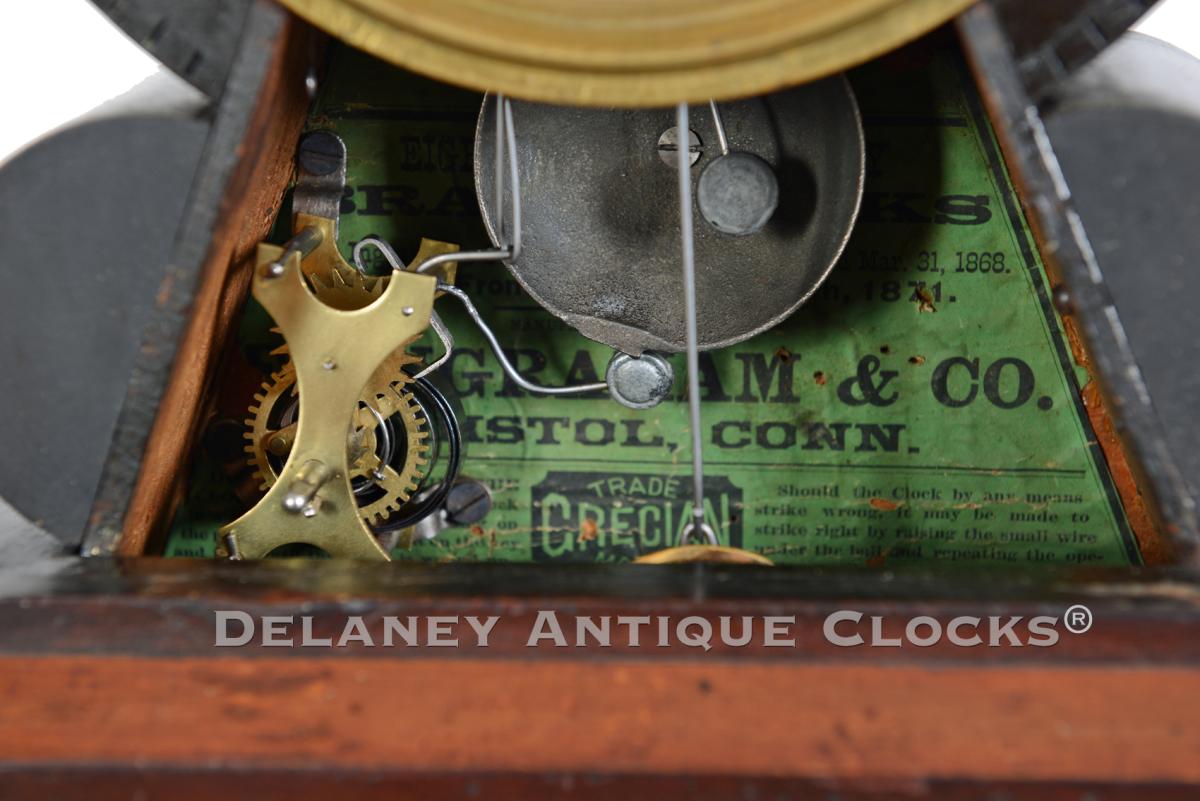Ingraham & Company of Bristol, Connecticut. “Grecian Mosaic.” Eight days, time, strike, and alarm. 223166.
The Ingrahams, a prominent clockmaking family, and their many firms were in business from 1828 to 1978, a span of 150 years. This model, known as the ‘Grecian Mosaic,’ has become increasingly collectible due to its compact size, attractive form, and colorful wood formatting.
This desirable “Grecian” model is constructed in mixed woods comprising maple and walnut. This example retains its first finish and has mellowed and darkened over time. The base structure is robust and supports the upper section of the case. The three circular details are included in the design of the access door, which is hinged on the right and locks closed with a hook-and-eye. All three circular details are constructed in maple and walnut. The two woods are positioned in an alternating pattern, and showcasing the contrast in the natural coloring of the wood is an exciting presentation. All three circles are detailed with moldings. The upper circle, also the largest, serves double duty as the dial bezel and is fitted with glass.
The paper dial is original to the clock and features the standard presentation of a closed minute ring and Roman-style hour numerals. The paper is pasted on a tin or zinc pan trimmed with a brass ring. The center opening is also trimmed in brass. Centered in this opening is the brass alarm disk. This disk is adjusted to set the alarm.
The brass-made spring-driven movement is designed to run for eight days once fully wound. It will also strike each hour on a cast iron bell mounted to the backboard inside the case. In addition, an alarm mechanism is fitted inside the case. This is also powered by a coil spring and is set independently of the main movement. The alarm is set by adjusting the brass alarm disk, which would have been fitted to this clock at the time of manufacture at an additional charge. The time is displayed with open moon-style hands.
The manufacturer’s green paper label is in excellent original condition and pasted inside the case on the backboard. It reads, “EIGHT DAY AND ONE DAY / BRASS CLOCKS. / Ingraham’s Patent, Sept. 30 1862; Re-issued Mar. 31,1868. / Mosaic Front, Patented June 6th, 1871. / MANUFACTURED AND SOLD BY / E. INGRAHAM & CO. / BRISTOL, CONN.” Below this are the instructions on how to operate the clock. The “TRADE / GRECIAN / MARK” stamp is also located here. On the back of the door is an additional green partial label. It reads, “Elias Ingraham’s Patent / May 30, 1871.” From a collector’s perspective, it is nice to have both labels present.
This very collectible clock was made circa 1875. It stands approximately 15 inches tall, 10.25 inches wide, and just under 4.5 inches deep.
Inventory number 223166.
Elias Ingraham was born in Marlborough, Connecticut, on October 1, 1805. He worked as a cabinetmaking apprentice for five years in Glastonbury. In 1825, he purchased his freedom and began working as a journeyman for Daniel Dewy of Hartford. In 1828, Solomon Hinman convinced him to move to Bristol and to make clock cases for George Mitchell. It is here that Ingraham designed and constructed the “Transitional” shelf clock form. Ingraham soon moves on and works for several other clock and furniture ventures. After numerous ventures, he formed the Elias Ingraham & Company in 1857 and was granted the first two patents in case design. The first was for the “Arch Column case, and the second was for the door design found in this example, having two circular doors separated by decorative rosettes. This design became extremely popular, and its influence finds its why in some of Ingraham’s competitor’s models. In 1860, the firm’s name changed to E. Ingraham & Company, reflecting a partnership with his son Edward. Elias died at his summer home on Martha’s Vineyard in August 1885. The business continued in various forms.

